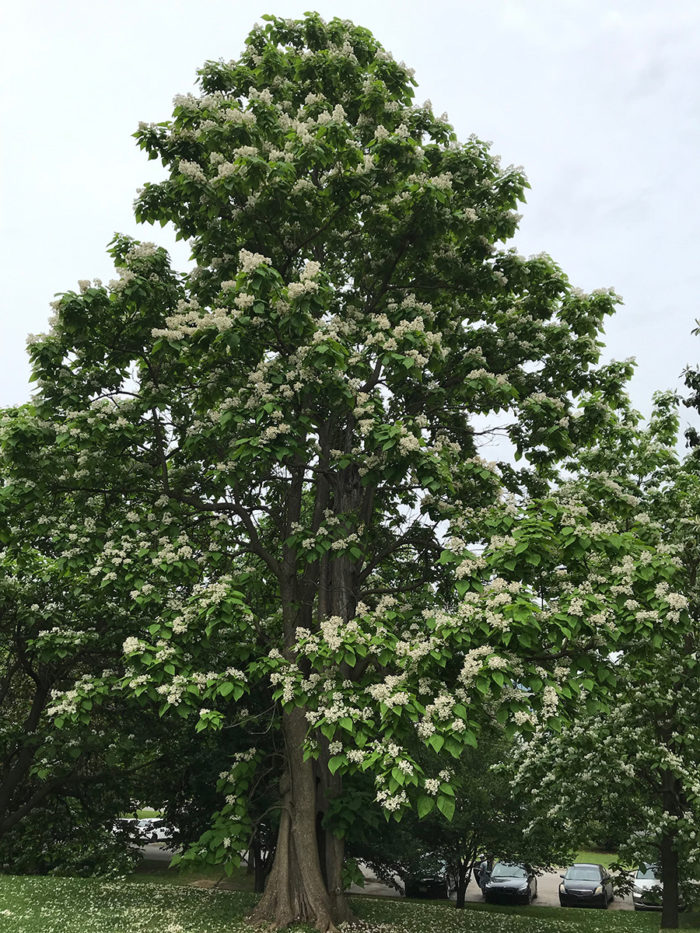
I love catalpa trees (Catalpa spp. and cvs., Zones 4–9). If you travel through the South, you might often find them as grand specimens in Progressive-era neighborhoods and older city parks. They grow along roadsides and among a variety of species in fencerows. Often catalpas are not glamorously placed in the landscape. You might first notice one when you trip over its roots as it lifts an urban sidewalk, or on a stroll through your city’s oldest cemetery. However, there is more to this tree than what you might see on the surface. It is deeply rooted in the landscape and the history of the South.
 |
 |
| Northern catalpa (left) and Southern catalpa (right) can be difficult to tell apart at a glance. Photos: Andy Pulte (left), needpix.com (right) |
Northern vs. Southern
There are two distinct species of catalpa in cultivation: the Northern catalpa (Catalpa speciosa, Zones 4–8) and the Southern catalpa (Catalpa bignonioides, Zones 5–9). The Northern catalpa has a taller trunk with vertically furrowed bark; the Southern catalpa is more squat and has bark that exfoliates in scales or flakes. The Southern catalpa has more flowers while in bloom, but they are slightly smaller than those of the Northern catalpa.
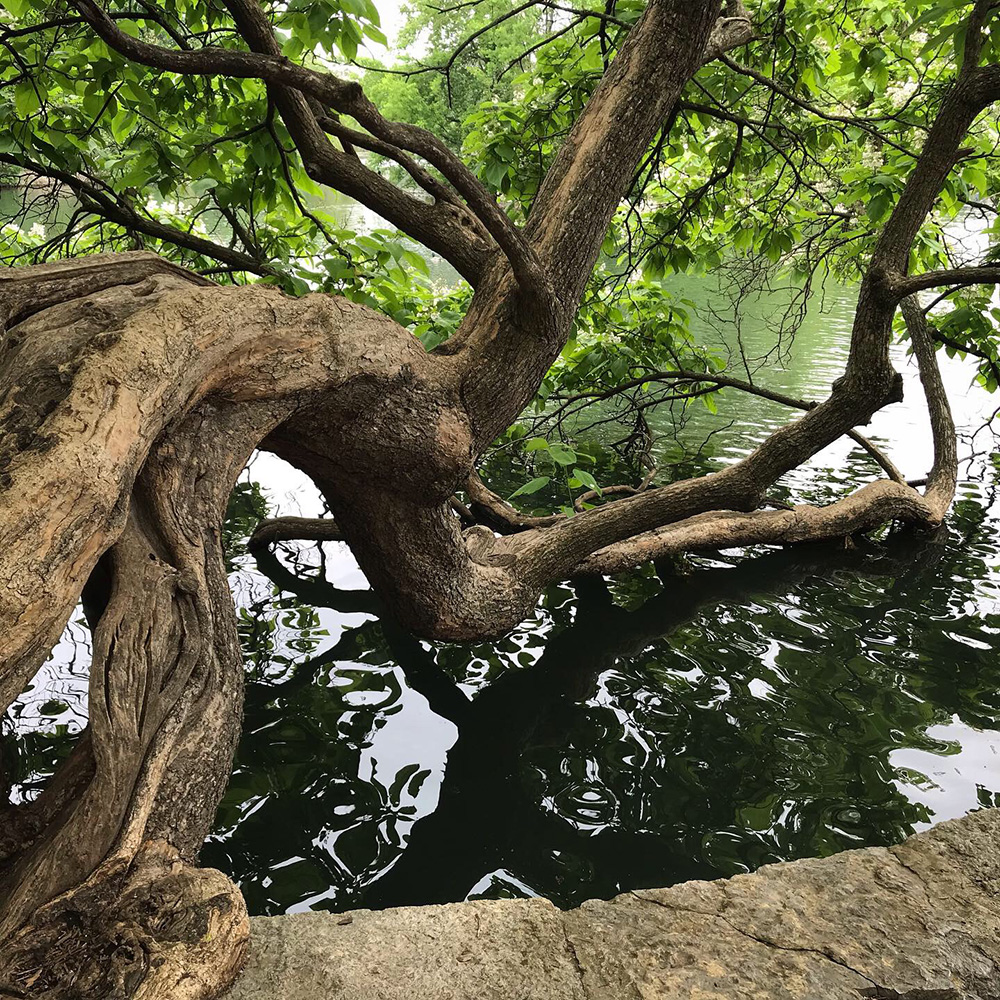
Distribution throughout the South
The Northern catalpa’s modern native range is primarily the states of Ohio, Indiana, Illinois, Missouri, Arkansas, Kentucky, and Tennessee. Southern catalpa’s modern native range is primarily Georgia, Mississippi, Florida, Alabama, and Louisiana. However, there is overlap, and even some of the most knowledgeable plantsmen have a hard time stringing together an explanation of the difference in range between the two species. It is thought that before European settlement these two species occupied nonoverlapping ranges in their original wild state, with the Southern catalpa having the most limited geographic distribution of only central Alabama and Mississippi down to western Florida. Catalpa owes some of its geographic distribution to the expansion of railroads in the 1870s. It was planted in large quantities with the intention of producing wood for railroad ties. The trees are fast growing, rot resistant, and easy to drive a spike into. Unfortunately, the wood ended up being too weak to support rail traffic.

A snowstorm of white blooms open in late spring
The bloom time of both catalpa species can vary depending on where you are in the South. The Northern catalpa will often bloom a few weeks before the Southern catalpa. You will often see catalpa in full bloom starting the last two weeks of May. This is perfect timing, as it can act as a bridge plant between spring- and summer-blooming trees. I asked Dr. Andrew Bell, executive director of the Nashville Tree Foundation, for his thoughts on catalpa. “The catalpa’s ultimate prize is its flowers,” he said. “As the spring-flowering season is wrapping up, catalpa is among the last to perform. Large white flowers, each with the most intriguing purple markings, guide pollinators into compacted, dense panicles at the ends of almost every branch.” With the catalpa, you don’t just get shade—you get a spectacular show of flowers.
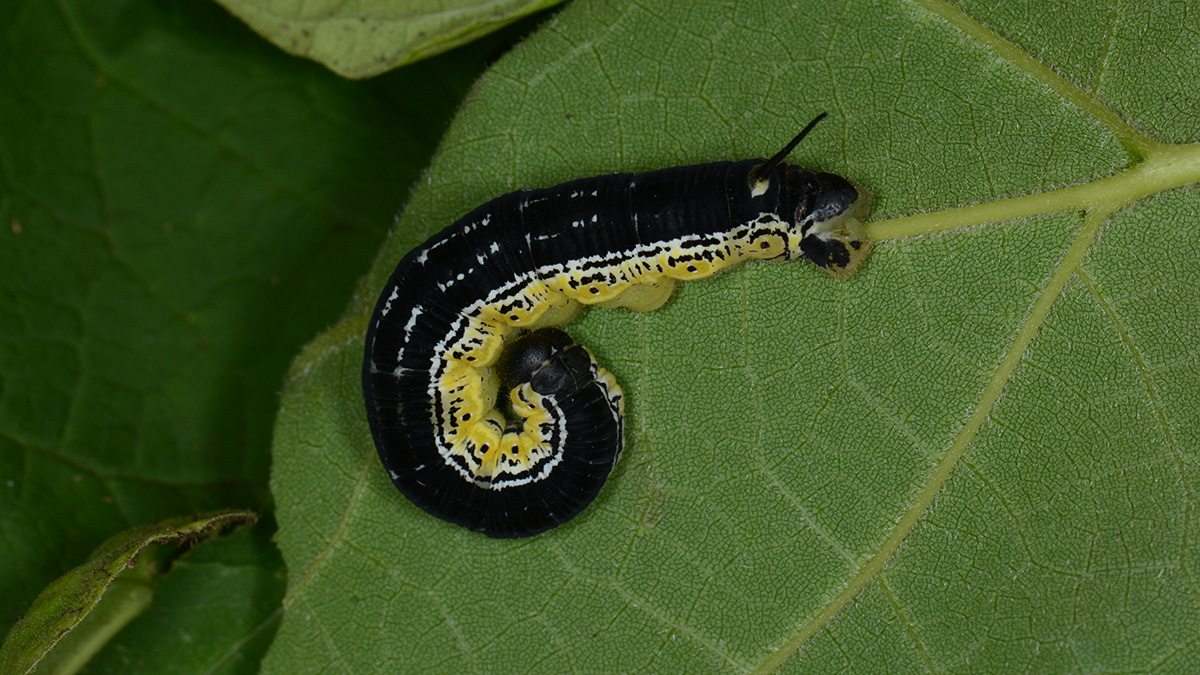
The most beloved pest in the South
First, if catalpa (ka-tal-pa) ever comes up in conversation in the South, you may run into some alternate pronunciations. You will often hear “catawba” (cuh-tah-buh), and the next thing you will hear about is the catawba worm. Catawba worms are actually catalpa sphinx caterpillars (Ceratomia catalpae), and they are capable of defoliating a large catalpa in a relatively short period of time. This often happens in the heat of the summer between mid-June and the 4th of July. Anglers across the South prize these caterpillars as the absolute best fish bait available during high summer.
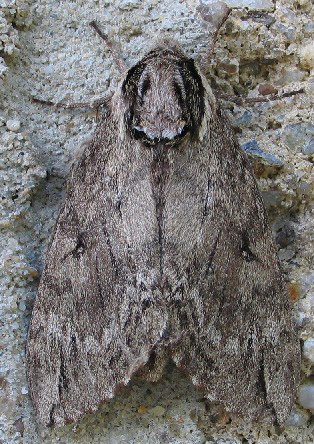
What is the catawba worm?
I turned to Prof. Peter VanZandt, chair of the biology department at Birmingham-Southern College in Alabama for more information on this pest. He replied that a catalpa sphinx caterpillar is “an easily recognizable, maybe even showy, juvenile form of a moth (which is especially bland for a hawkmoth).” He continued: “They only eat two types of host plant—leaves of Northern or Southern catalpa trees. In the adult, winged phase of life, they have no mouth and cannot feed, so their brief winged life is completely dependent on the reserves built up as foraging caterpillars.”
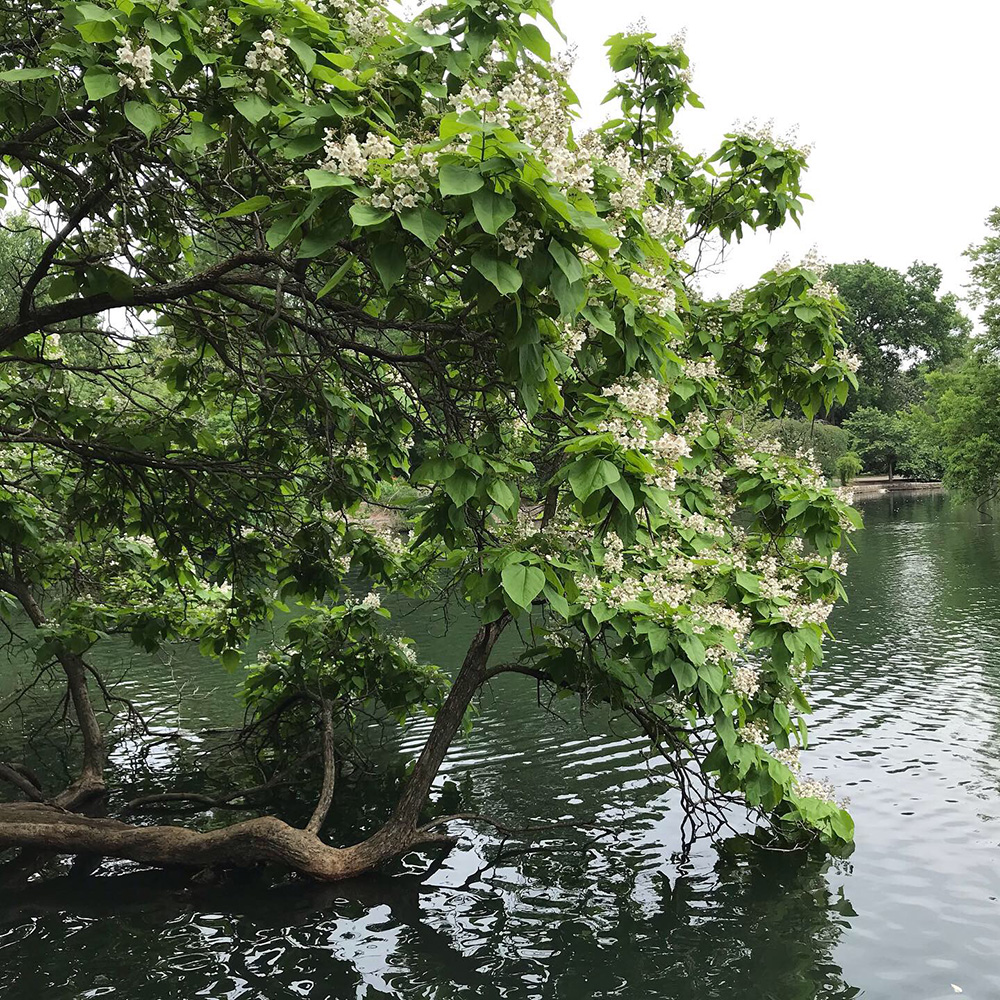
What role do catawba worms and their host trees play in the South?
They sometimes decimate foliage with their feeding, but trees just regrow their leaves and don’t appear to be harmed. It seems instead as if the biggest impact might be cultural. Prof. VanZandt explained: “The catalpa sphinx caterpillars have a cultural lore about them where people believe they’re magical fish bait. People guard their locations carefully, and there’s even some evidence that people have planted catalpa trees near fishing sites in hopes of having ready access to this bait.” The term “catfish candy” is often used by those fishing with this bait, which only comes around once a year—that is, unless you buy them frozen or freeze some yourself.
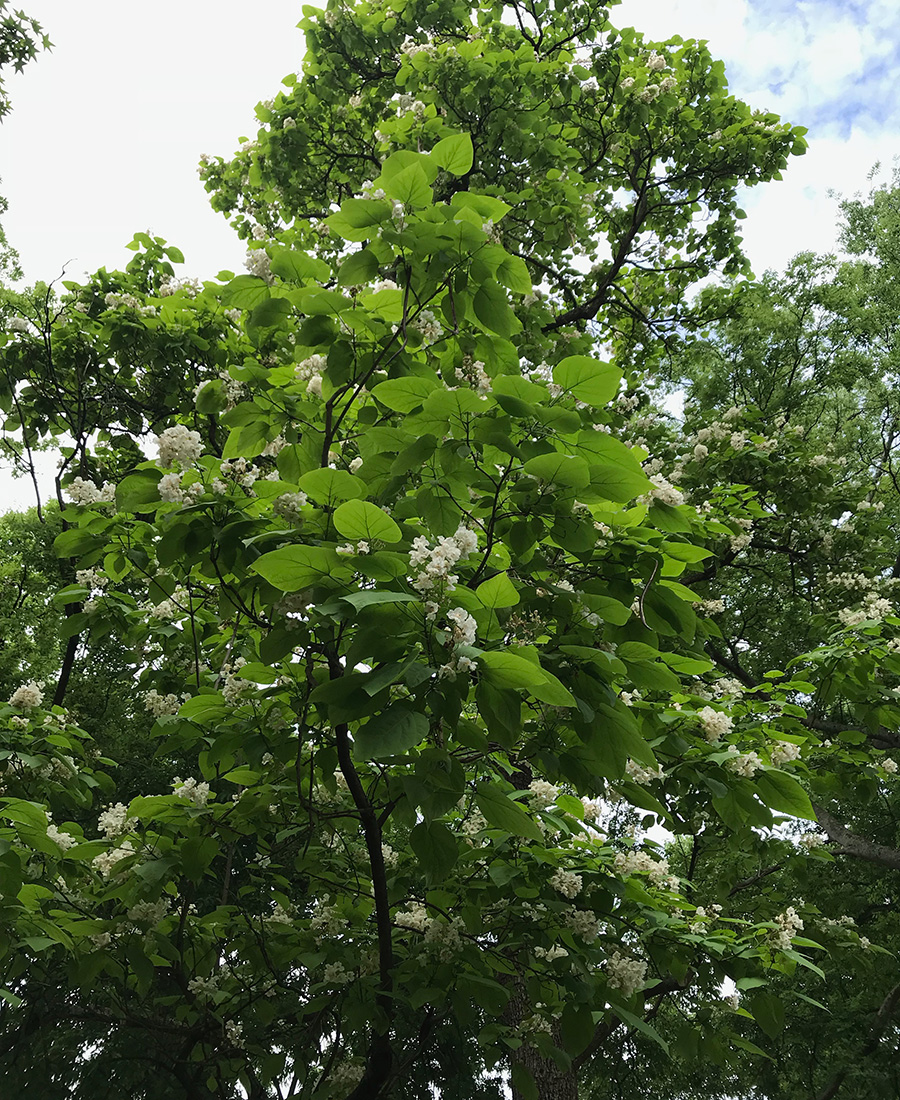
Legitimate and worthwhile garden specimens
Catalpa is a member of the bignonia family (Bignoniaceae), which is largely composed of tropical plants. My overall assessment is that young catalpa trees are not much to look at in the landscape. However, when they get some age on them, they transform into one of the most spectacular trees that can be found in the Southern garden. At maturity they can grow to be 50 feet or more high and 30 feet or more wide. The silhouette of a catalpa in winter is something to behold and will hold the gaze of almost anyone.
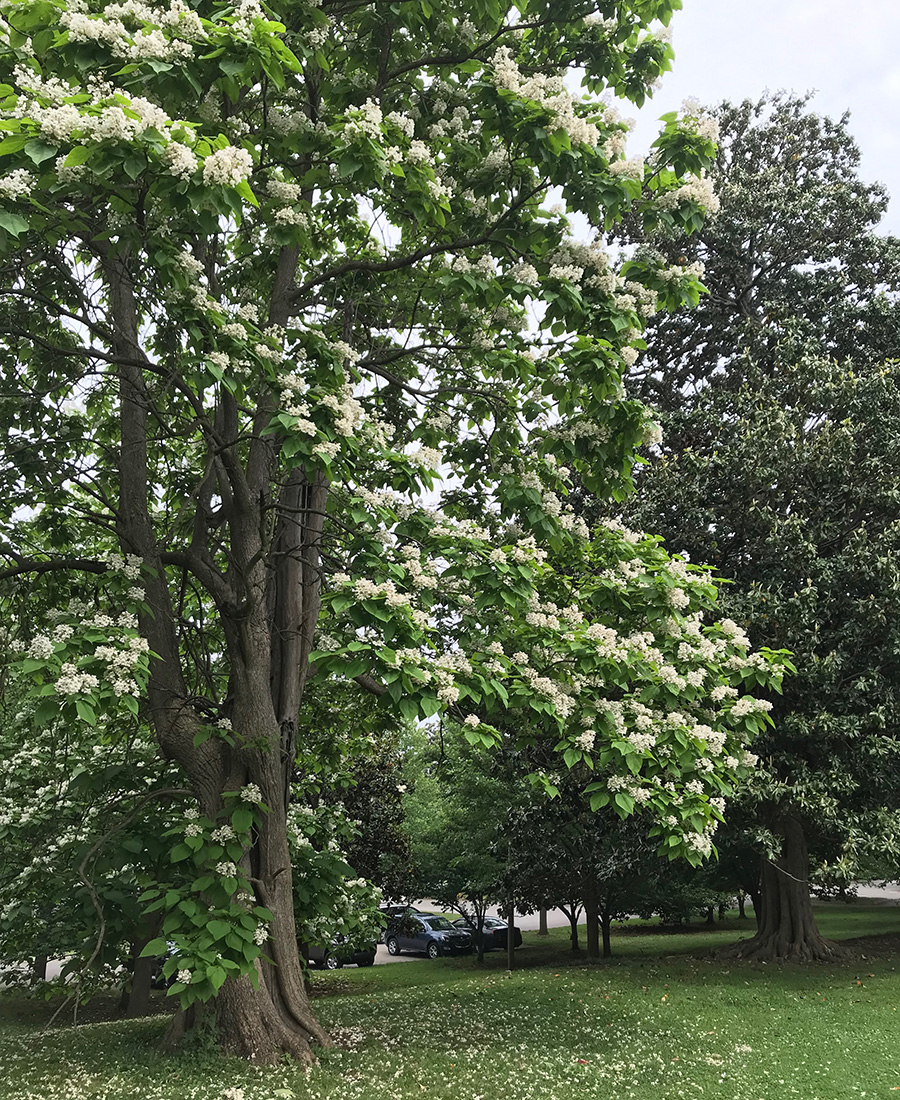
Growing your own
If you want a catalpa in your landscape, know that they are rarely found in retail garden centers. However, there are online sources you can try, as well as wholesale growers producing larger trees for the landscape market. You can also simply dig up a wild one yourself. Catalpa trees are very tolerant of different soil conditions but find their favorite home in moist, fertile soil. When choosing a location for a catalpa, make sure you provide plenty of room for the tree to develop into its full character. Perhaps now is the time for new gardeners to rediscover this wonderful native tree and find ways to incorporate it into the landscape. And anyone can become an advocate for this tree in local parks and greenways.
—Andy Pulte is a faculty member in the plant sciences department at the University of Tennessee.



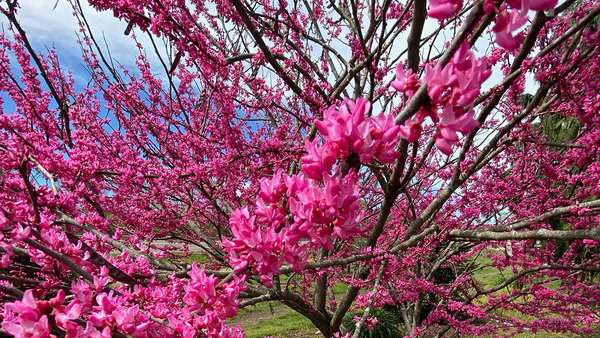
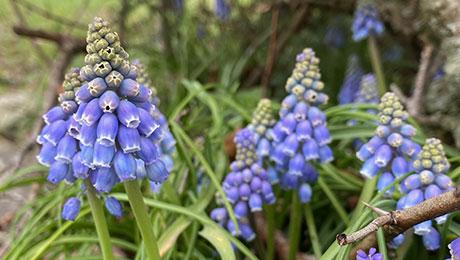













Comments
Thanks for sharing this information!
Good job! Nice article
Nice One!
It's amazing!
Log in or create an account to post a comment.
Sign up Log in